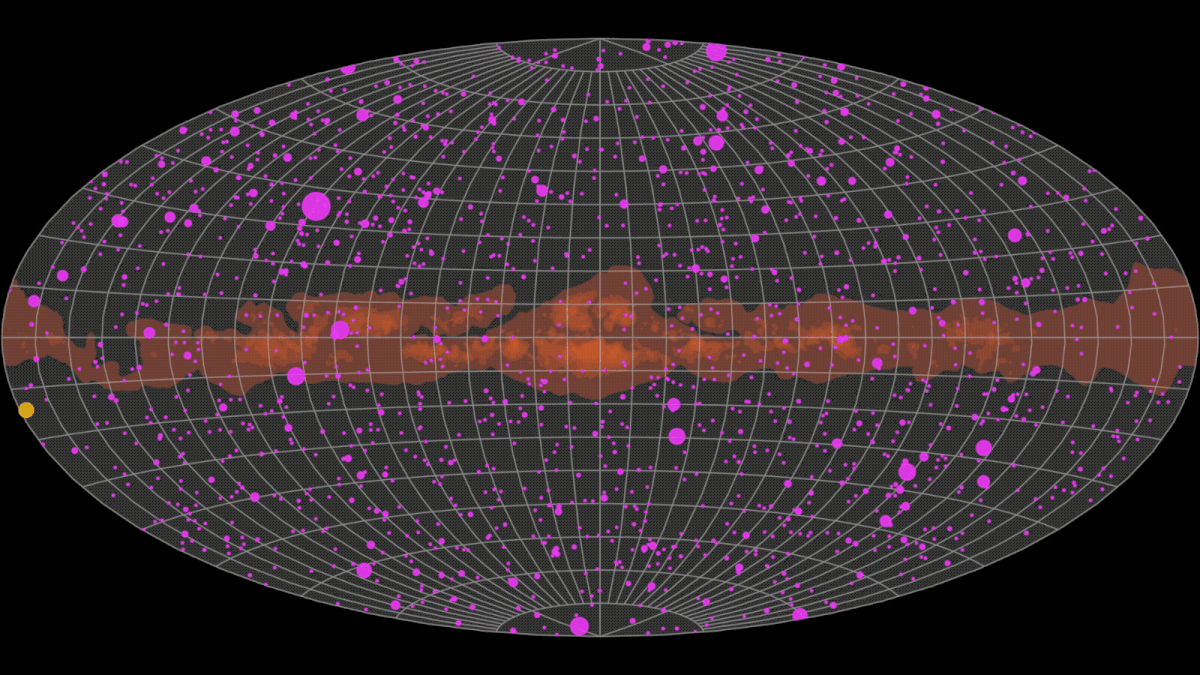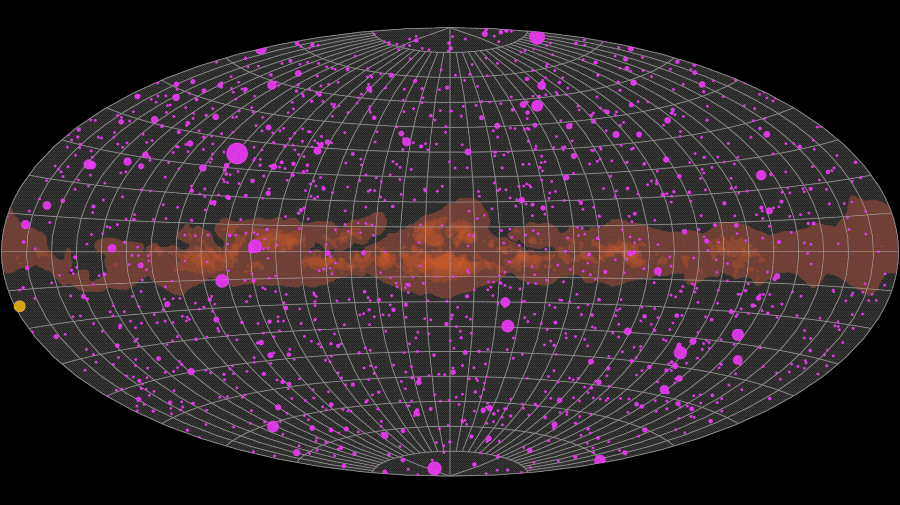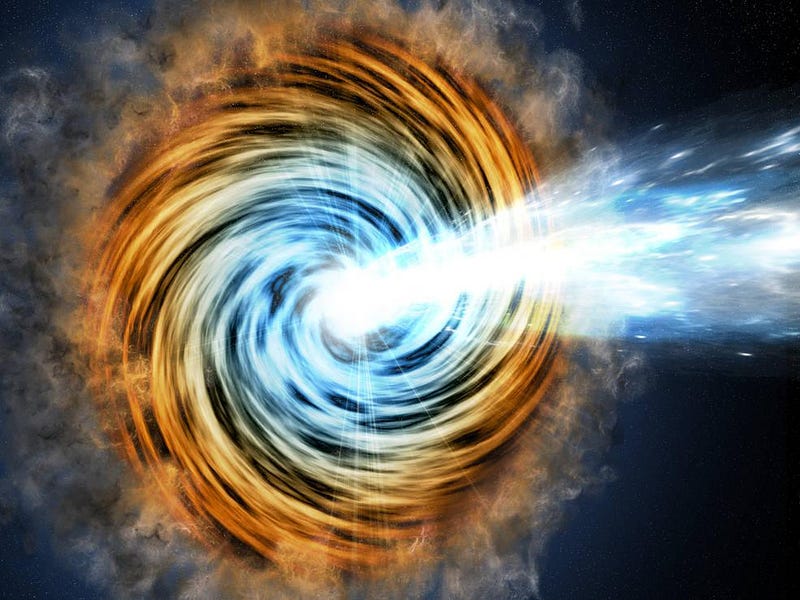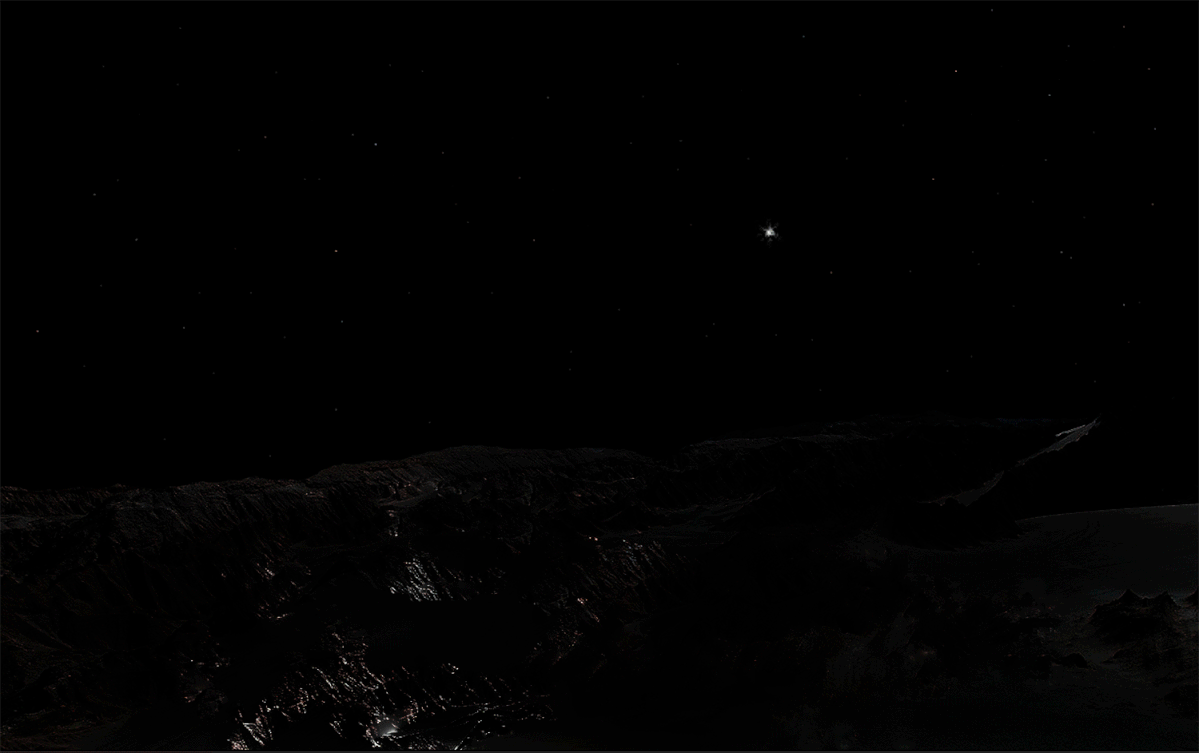The Cosmos in Gamma Rays: A Stunning Visual Exploration
Written on
Chapter 1: A Glimpse into Gamma-Ray Astronomy
Imagine witnessing a universe alive with vibrant bursts of purple light. This is the stunning portrayal created by NASA, showcasing cosmic sources of gamma radiation in a captivating animation.

[Photo: NASA’s Marshall Space Flight Center/Daniel Kocevski, Public domain, via Wikimedia Commons]
When we gaze at the night sky, it often seems dark and empty. However, with advanced gamma-ray detection technologies, astronomers uncover dazzling flares hidden from naked eyes. Since 2008, the Fermi Gamma-ray Large Area Space Telescope (Fermi GLAST) has been monitoring the cosmos from a few hundred kilometers above our planet. This observatory is outfitted with two primary instruments: the Large Area Telescope (LAT), which detects gamma rays, and the Gamma-ray Burst Monitor (GBM), which captures gamma flares.
Section 1.1: The Animation Explained
The animation from NASA presents a selection of gamma-ray sources cataloged over the past 15 years. Each grid in the animation represents three days of observation, with the varying dot sizes indicating the intensity changes of specific sources. Notably, some sources fluctuate seasonally, while the reddish band at the center signifies the Milky Way, which also emits gamma rays—the more orange the hue, the more intense the radiation. Additionally, the yellow sphere tracing a sine wave represents the Sun’s annual path across the sky.

[Photo: NASA’s Marshall Space Flight Center/Daniel Kocevski, Public domain]
Subsection 1.1.1: The Power of Multi-Messenger Astronomy
This impressive animation, viewable on NASA’s website, is made possible by observations from the LAT, which has cataloged around 1,500 objects, with over 90% classified as blazars. Blazars are a type of active galaxy, characterized by dense star clusters and a supermassive black hole at their core. This black hole ejects two energetic jets of matter in opposite directions. If one of these jets is aimed directly at Earth, our instruments can detect its gamma radiation.
In 2018, the IceCube neutrino detector identified a neutrino from a distant blazar, which coincided with gamma rays recorded by the LAT. This highlights the effectiveness of multi-messenger astronomy, where various instruments collaborate to study cosmic events by detecting different forms of radiation, gravitational waves, or particles from outer space.

Blazar illustration — [Photo: JPL, Public domain, via Wikimedia Commons]
Section 1.2: Other Sources of Gamma Radiation
Besides blazars, several other cosmic phenomena can generate gamma radiation. Pulsars, which are rapidly spinning neutron stars, along with quasars, supernovae, and the remnants of these stellar explosions are notable sources. Hypernovae, violent events that occur when massive stars collapse into black holes, are also likely contributors to high-energy gamma-ray emissions.
Interestingly, gamma radiation is not solely an extraterrestrial phenomenon; it also occurs on Earth, such as during radioactive decay or nuclear detonations. This connection has spurred the growth of a specialized branch of astronomy focused on studying cosmic gamma-ray sources.

Planet near Pulsar — [Photo: Interpott.nrw / Unser Kosmos, CC BY-SA 4.0, via Wikimedia Commons]
Chapter 2: The Origins of Gamma-Ray Astronomy
The inception of gamma-ray astronomy dates back to the 1960s, during the Cold War, when the United States deployed Vela military satellites designed to detect brief bursts of gamma radiation associated with nuclear tests. These satellites were intended to verify compliance with international agreements prohibiting such tests by the USSR.
However, as the Vela satellites became operational, they recorded gamma flares approximately once a day, far too frequent for Earth-based nuclear tests. This discovery indicated that these satellites were observing gamma emissions from outer space, revealing an abundance of cosmic sources previously underestimated.
“Frightening” discovery on an isolated island. Researchers found plastic rocks
Will plastic rocks appear on beaches more and more often? This is already another example of how people are destroying…
Cool that you made it to the end of this article. I will be very pleased if you appreciate the effort of creating it and leave some claps here, or maybe even start following me. It would be nice if you also left a tip! Thank you!